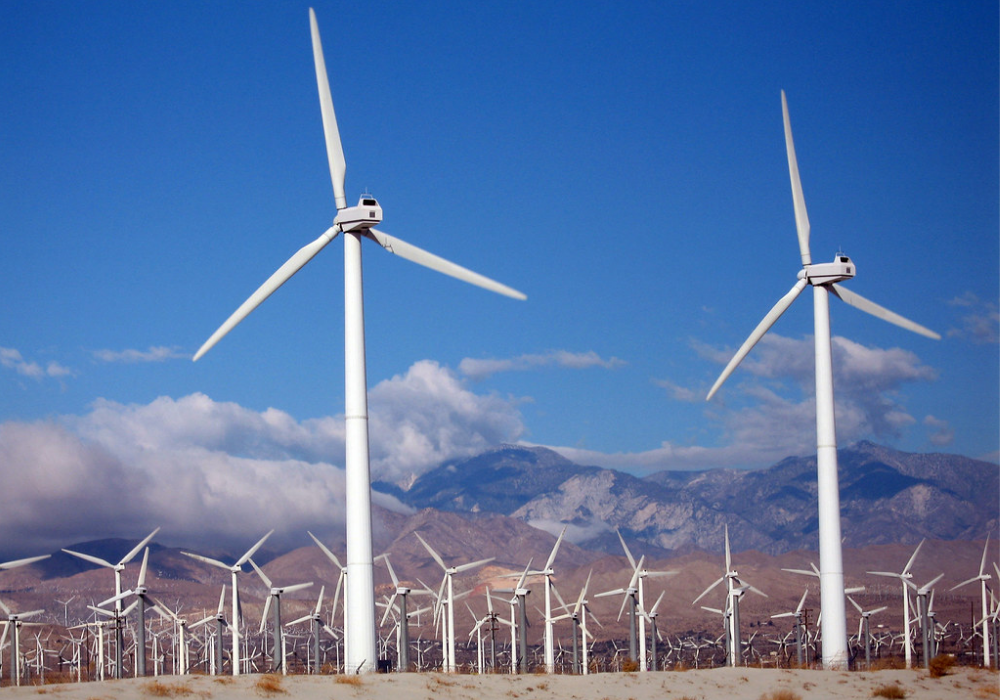
Analysts say “massive investments” in clean technologies and infrastructure will be needed to meet the Paris Agreement goals.
The international climate pact, signed by 197 nations at the UN’s COP21 climate conference in 2015, is aiming to cap the rise in global temperatures by 2100 at “well below” 2C, with 1.5C being the ideal scenario.
While the appetite amongst investors has increased for renewables, Wood Mackenzie’s latest annual Energy Transition Outlook notes that achieving a 2-degree world remains a “Herculean task” as the fight against limiting the rise in global temperatures continues.
This year had been earmarked as a key milestone for the Paris Agreement, with member countries expected to update their Nationally Determined Contributions (NDCs) – which sets out their plans to reduce emissions over the next five years – as well as their “long-term” decarbonisation strategies by the end of 2020.
But this deadline has effectively been pushed back by a year, following the postponement of COP26 in Glasgow, UK, to November 2021 due to the impacts of the coronavirus pandemic.
Combine coronavirus recovery efforts with investments in renewable energy
Prakash Sharma, Wood Mackenzie’s head of markets and transitions for Asia Pacific, said the pandemic has “slowed climate change mitigation efforts this year”.
Wood Mackenzie has now called upon the world to combine its coronavirus recovery efforts with “massive investments” in renewable energy and clean infrastructure, highlighting renewables, green hydrogen and carbon capture, utilisation and storage (CCUS) as key technologies to achieving the Paris goals.
Sharma said: “As the world begins to reconstruct its economy, all energy and natural resources sectors will face a survival of the fittest.
“We call it the ‘Darwinian Challenge’ because society and investors must evolve and adapt to the changes needed to overcome the twin crises and prepare for the future.”
Nearly $20tn, or 25% of global GDP, is earmarked for spending over the next 12-to-18 months to deliver a coronavirus vaccine, tackle unemployment, rebuild public health systems and get economies back on track.
But Sharma claims this investment figure only has “tiny proportions” allocated to the promise of the Paris Agreement targets.
“Some jurisdictions, such as the EU, have doubled down on green goals, but it is currently up in the air in the US and China,” he added.
“While China recently set a goal of achieving carbon neutrality by 2060, this does not overwrite the country’s intent to greenlight thermal coal plant construction as part of its next five-year plan.”
Transforming power sector alone will not get the world “even close” to its climate goals
The International Energy Agency (IEA) said earlier this month that more action is needed to develop clean technologies that will decarbonise industry, buildings and long-distance transport.
While the growth of renewables such solar and offshore wind is helping to drive the low-carbon transition of power generation, this only accounts for 38% of global energy-related emissions.
In a press briefing, IEA executive director Dr Fatih Birol said: “Transforming the power sector alone will only get the world one-third of the way to net-zero emissions – not even close to our climate goals.”

More than half (55%) of carbon emissions from energy processes are produced by transport, industry and buildings – “end-use” sectors where existing infrastructure like industrial facilities are likely to be in use for many years.
The IEA has recommended that an accelerated roll-out of hydrogen and CCUS technologies will be crucial to achieving full decarbonisation, as well as biofuels and further innovation of the technologies that will support widespread electrification.
The energy watchdog estimates that about 40% of cumulative emissions from existing heavy industry infrastructure could be avoided through “strategically-timed investments”.
“A very critical issue is for governments and investors to make the right technology policies and investments,” said Dr Birol. “Governments will determine the fate of these technologies, and therefore whether or not we meet our climate goals.”
“Emissions-intensive capital stock” blocking pathway to Paris Agreement goals
Wood Mackenzie believes an obstacle blocking the path to reaching the Paris Agreement’s temperature targets is the “emissions-intensive capital stock” that is already embedded in the world’s energy systems.
“Emissions will continue increasing unless there is an incentive to rationalise the carbon-heavy assets or retrofit it with CCS – a Herculean task without an appropriate tax on carbon,” said Sharma.
At the present rate of progress, Wood Mackenzie’s projects that the world is on a 2.8C-to-3C pathway warming trajectory – well above the targets set forth by the Paris members.
David Brown, Wood Mackenzie’s head of markets and transitions for Americas, said: “The world’s transition to clean energy and net-zero emissions is clearly tied to electrification.
“We see it progressing slowly in our base case and forecast electricity’s share in final energy consumption to reach 26% by 2040 from about 22% today.
“However, electrification and efficiency improvements slow emissions growth in our outlook.
“We see energy emissions peaking at 36.3 billion tonnes in 2030 and then falling approximately 4% by 2040, still about 2.6% higher than 2019 levels.”
Coal, gas and oil will still contribute heavily to energy supply in 2040
Wood Mackenzie’s expects coal, gas and oil to still contribute about 80% of primary energy supply by 2040, which it notes is a “far cry” from the 50% maximum needed for the world to reach net zero by 2050.
In its Energy Transition Outlook, the researcher developed scenarios to quantify potential high and low cases for commodity markets to 2030.
Under its 2-degree pathway scenario, Wood Mackenzie estimates that Western Europe and the US can reach net-zero emissions by 2050, while China and India will take longer to get there as they are both on a “different energy transition trajectory”.
Brown said: “If world leaders want to maintain any credibility in pledging commitment to the Paris goals, they will need to do more to show how they intend to achieve them. As things stand, we are not going to get there.”






